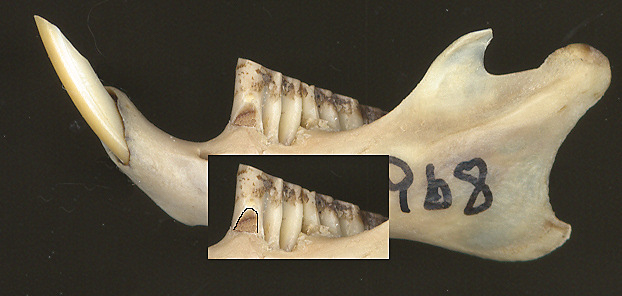

Ever chomp away on a piece of taffy and wonder if your teeth were going to be pulled out by the roots? Luckily, we're pretty well rooted, tooth-wise. There are animals, though, that could have a hard time keeping a mouthful of teeth. Some rodents have tall molars, where any side-wise pressure could loosen them; and many species of voles have molars that grow throughout their lives, and this requires no roots whatever. The main problem is that the fibers that attach teeth to jawbones can't attach properly to the smooth enamel. So what's a fellow to do? Simple. Leave parts of the enamel off, revealing the anchorable dentine beneath.
In tall-toothed packrats, a strip of dentine up the side of a molar
helps anchor the tooth until the tooth is fully erupted; by then, the tooth has worn
down to the point where it's no longer in danger of loss. In the ever-growing teeth
of voles, vertical strips along the sides of the molars work well. Of course, realize
that we haven't tested this out with taffy!

Listen to the Audio (mp3 format) as recorded by KTEP, Public Radio for the Southwest.
Contributor: Arthur H. Harris, Laboratory for Environmental Biology, Centennial Museum, University of Texas at El Paso.
Desert Diary is a joint production of the Centennial Museum and KTEP National Public Radio at the University of Texas at El Paso.
